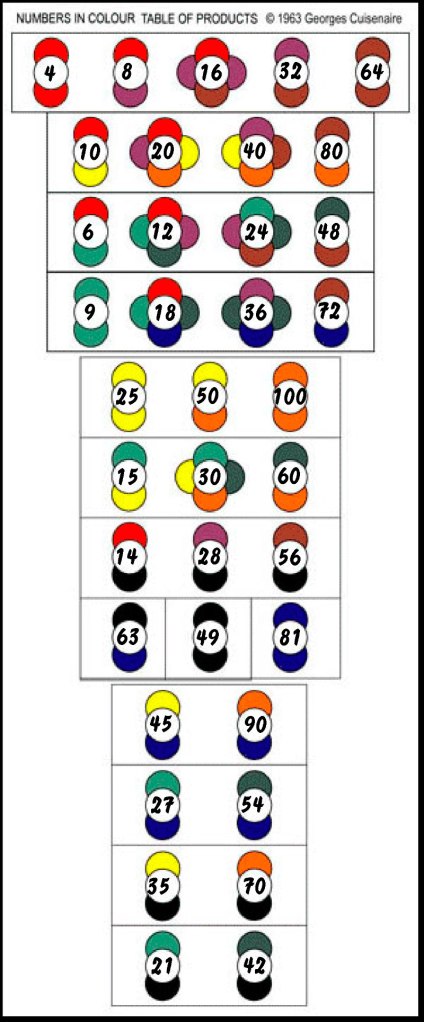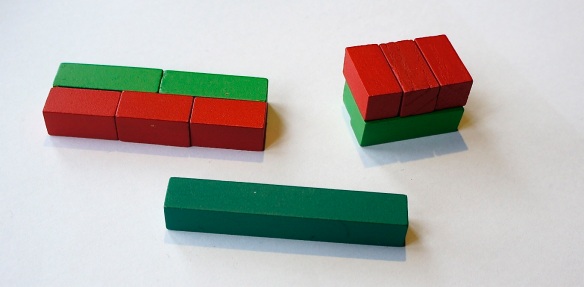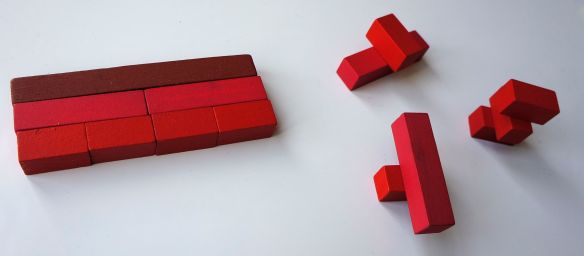an awareness that these marks carry meaning but that the marks are an immense abstraction from the external reality that was their origin
I saw it and my eyes gravitated to the 8. I knew it was ten
I have an image of 10 being a lot of other things – 10 is the destination – it isn’t one thing
if you’re little it would be best if you had the confidence to scan it first rather than do it bit by bit from the 2. You’d save yourself a lot of trouble
12 + 3
I know that I can do the 2 plus 3 bit and basically that’s it but I imagine that’s not obvious to little children
I see 5 and I see it in the teens
I have a picture of it living above 10 but before 20
I just know the answer
you could count on from 12
the 1 feels completely separate from the 2 – I know it s to do with place value – some people might not have that feeling
when I see “12” I see 10 and 2 – 12 doesn’t look like “one squiggle”, one thing. I see it as something to do with ten and some more
3 + 14
I know I have to add the 3 and the 4 and I know straight away that that’s 7
the 3 and the 4 belong to the same family – they live in the same room
I know you can ignore the 1, because its different
you have to know the commutative rule or you’re in trouble
it’s best to scan the whole thing again first
it looks worse than the previous one – there the 2 and the 3 were together, now they’re separated by a 1 and the 1 is not really a 1, it’s a ten
place value is really important but I bet it’s not easy to see it and understand it at first
we’re a long way away from a beginner aren’t we? I suppose it’s like that with reading
In a way this is reading for meaning isn’t it?
15 + 6
I can see five’s in there
There’s two five’s and a spare 1
In my head I can hold the first ten, see two five’s making another one, so that’s twenty, then add on the 1 to make 21
I see fifteen, a five and a one, so I know its 21
it’s a kind of making up to twenty
you have to know the five family
you have to know the way that five’s march on
when you look at the 15 it sort of sets your mind into knowing you’re looking for 5 more and so when you perceive the six, you see the 5 and a 1 in it
its to do with knowing complements again but its complements of five this time
I imagined before we did this that only complements of ten would be useful
I have an image of ten in two equal parts
I sort of see five’s and zeros going on and on and I feel the importance of the 10, 20, 30, 40 series is important somehow – they’re like barriers or boundaries
I see it as a sort of hole filling exercise – from the six I see 5 of them “falling” on top of the 15 and filling it up to 20, and then the one is all alone
6 + 17
I don’t like 6 add 7, I like 7 add 6, perhaps because 7 is nearer a ten boundary ?
it doesn’t matter which one you do – that’s the commutative rule again
6 and 7 look like 13 to me
I make the 17 up to twenty by using 3 of the six, then the 3 left goes on top of the twenty
there’s a lot of manipulating going off in here
first you scan it, you make a decision to make the 17 up to 20, you decide you need 3, you look at the six and take three off it, then you can forget about the first 3 that you’ve just taken off, but you have to hold the 3 that’s left in your mind and stick it onto the 20 you’ve just built – wow, there’s a lot of things in there – a lot of decisions, memory and pictures
useful complements to boundary numbers like 20 and 60 are the same as the complements to 10
that might not be obvious to little children
23 + 21
place value is fundamental
you have to see the 2’s being in a different sort of group to the 3 and the 1
I scanned it and then I felt like adding 20 on to the 23, which made 40, then I added the last 1 on to make 44
I sort of added the two sets of numbers simultaneously but my mind had sorted them out into the place value set, that’s the twos, and the “bits left over” set which is the 3 and the 1
so there were two parallel columns in my mind even though its written out horizontally
by just scanning it I know that this is an “easy” sort of problem because neither sets of numbers are going to cross a tens boundary so I know I haven’t got to hold much in my head
23 + 28
this looks worse than the last one because I know I’ve got to cross a boundary
I see 8 and 3 make 11, then I added 40 to get 51
really there’s a lot in here again if you take it all to pieces
I scanned it and I suppose I was comparing what I perceived with my memory banks of tricks and concepts trying to match something up. I recognised the 3 and the 8 as being 11, though I think I actually “saw” 8 and 3, not 3 and 8. I knew that I could keep certain groups of numbers separate, the place value thing. Then I was floundering a bit because it didn’t come to me immediately to add on 40, there was a delay, and I was a bit worried about finding the path to the answer. I nearly added on 2 to the 11 and then two more, to make 15 but I knew this was wrong. Still, I nearly did it and the image of 15 momentarily popped into my mind. I was quite shocked
I noticed that though there’s quite a lot of separate things going on before we get to the answer, we only seem to be able to do them two at a time
the way we do things can be sort of binary and linear, but in other ways what we do is like “deal in wholes”
this scanning thing seems very important to me
I think the scanning process is connected with wholeness and a kind of “holistic sensing” and this “informs” the analytic mind of “the way” to follow to get the answer. This “way” is then put into practice using the analytic binary “mind” that begins operating on the figures or images of the figures
sometimes though, one “sees” the answer immediately without seeming to have “done anything” and even when the “binary mind” is set working, the “sub answers” still might “pop in” holistically
so I suppose the analytic and the holistic work together in there
some people seem to have a good “feel” for number and operations with numbers
perhaps this is connected with this “holistic sensing, scanning and tapping in to the body of previous experience and insight”
the scanning causes “resonances” with past insights
so in order to become good at adding we should make provision for them to have rich experiences and insights of all these matters we have been talking about – at least
56 + 29
I have to write the numbers down underneath each other
I scanned it again and decided to add 30 to the 56, which was easy and then take 1 away to get 85
I looked at it and just knew that 9 and 6 were 15, then I added 70
I took one off the 6 and gave it to the 29 to make it 30, keeping the 55 in my head, then I knew the answer was 85
I saw 70, another 10 and a 5, but if you take that to pieces I suppose it was quite complicated really
29 + 59
well, when I see this I can see that its best to call it 30 and 60 and then take 2 off
some people might think that’s not “fair” but it gets the right answer
if you’re taking things off from a ten boundary then that’s complements again isn’t it, but this time you’re coming down rather than going up
it’s still complements that make ten
you’d have to know that if you add something on to change a number to an “easier” one, you’ve got to take whatever it was off again at the end
I suppose that might not be obvious to some children, or at least it might need a lot of practise
it’s an abstraction isn’t it ?
123 + 148
it’s not really any harder if you know all about place value
all the same kinds of thoughts apply
I suppose you really need to know that the 1’s are actually standing for 100’s
yes, its a matter of deciphering meaning again
there are more things to hold in your mind as the numbers get bigger, so I suppose people feel more of a need to write things down
yes, I suppose the individual reaches a point when it becomes necessary or at least useful to start writing things down, though I suppose some people can hold more things in their minds than others
I wonder if this is innate or whether it can be improved by practise ?
is there a best way of writing the working out down?
well, no, because if we help them to scan “sums” and help them to have a good “feel” for number, this implies a variety of ways might be appropriate, not just one way
I know but I was taught to do adding up in one particular way and it works for me
well yes it might work, but is that all maths means to you then, learning a few techniques so you can use these skills as tool s in other areas like science, or for doing your tax returns?
you’d probably use a calculator anyway
maths can be seen as a creative vehicle in its own right can’t it, like painting?
why can’t you see that individuality can be allowed a place in there?
most people don’t like maths and it’s not surprising is it?
it’s our job to try and let people see it as something good to do in its own right
if we want to be good teachers its no good just re-inforcing our own programming is it?
what was good enough for me is not good enough for the children I want to teach
if we work at it and try to see all the issues inside even the simplest looking thing like
2 + 2, and so on like we have been doing, and then provide loads of rich experiences so they can practise the things we think are important, and so get the children to have lots of success and so on at their own level, then that’s got to be good for the children and good for the image of maths hasn’t it?
see this for the results






